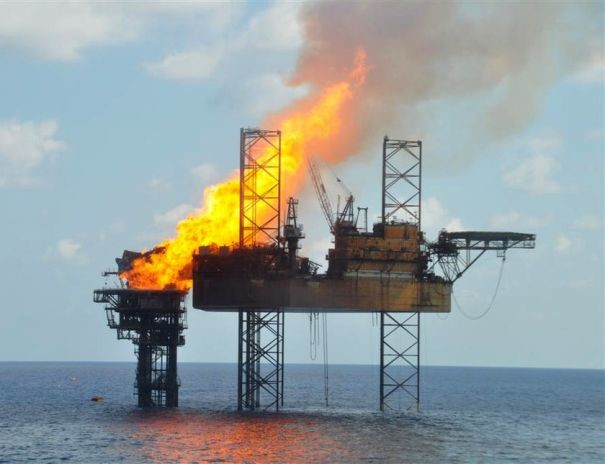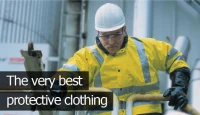In industries where fire is a potential life-threatening danger, safety depends on preparation; every eventuality must be weighed and considered ahead of time. This means proper consideration of the safety procedures, a comprehensive assessment of the risks involved and a commitment to making sure that you absolutely have the best gear to protect you should the worst happen.
Fires take many forms and each presents its own unique and challenging characteristics. Here of some of the most destructive blazes you are likely to encounter, and the gear you need to be wearing.
Forest Fires
Intense oppressive heat, unrelenting expansion and with speeds of up to 14 miles an hour, forest fires (or wildfires) present firefighters with one of the most frightening environments imaginable. They are capable of generating up to 7 mile convection columns, hurricane strength winds and can even spontaneously produce their own lightning.
Attempting to contain and diffuse such volatile environments presents firefighters with a monumental challenge. The breadth of this challenge was illustrated recently in the news reports covering January’s forest fires in Australia. On the back of a record breaking heatwave – their hottest summer since 1908 – Australia suffered one of the most terrible wildfires in its history. This overwhelming heat over a prolonged period essentially readied the kindling, creating huge expanses of dry underbrush that would ultimately feed the savage gluttony of the flames.
As with all fires, the intensity produced in the blaze is a product of the fuel it consumes and, generally speaking, the more fuel available, the more intense the blaze. It is not difficult to understand the magnitude of the problem this presents for hot countries with such vast expanses of woodland. It is estimated that more than 100,000 wildfires clear 4-5 million acres (up to 2 million hectares) of land in the U.S alone every year.
Faced with the prospect of encountering such a blaze, it is imperative that those tackling it be well prepared. The High-Vis Flameproof Gore-Tex Jacket provides a high level of flame protection, and while no garment could be described as ‘comfortable’ in such a circumstance, the Gore-Tex fabric is breathable, and provides some semblance of relief in the face of such an aggressive fire.
Oil Rig Fires
In 1988 The Piper Alpha oil rig was decimated by fire, the blaze ripping through the structure leaving workers fatally stranded.
Although oil rig safety has improved a lot of the years (particularly with the introduction of the Blowout Preventer – BOP); oil rig fires remain one of the most dangerous explosive hazards in the industry.
Oil rig blowouts can occur in a number of ways, and all with equally devastating and emphatic results. Pockets of gas build up incredible pressure under many layers of rock, and if the heavy fluid or ‘drilling mud‘ kept within the drilling hole to restrain it is overwhelmed, natural gas, oil or water can ‘blow out’ – with spectacular and terrifying ferocity. Although the BOP has now circumvented much of this risk (acting as a kind of lid on a pressure cooker), the threat of blowouts still remains if the BOP is not closed in time, and the results are horrendous. Risk factors are ubiquitous on oils-rigs, as demonstrated in the Gulf oil rig fire, ignited by an acetylene torch cutting an oil line.

Oil and gas industries require quality, durable and resilient workwear that can provide the utmost protection whilst remaining practical. The Nomex Coverall is manufactured to the highest specification, tailored for comfort with a multitude of pockets designed to anticipate the needs of the wearer. All this though is secondary to the protection the coverall offers, Nomex being the most effective inherently flame retardant fabric available.
Petrol Fires
Any environment containing flammable fuel is one that demands the most stringent safety practices are followed at all costs. Add the element of competitive racing into the mix with an emphasis on speed, and you are inevitably faced with a perilous and potentially fatal set of circumstances.
In the clip below, Jos Verstappen, a veteran driver from Benetton-Ford comes in for a pit stop. As the jacks lift the car and the fuel hose disconnects, a quarter of a second fuel leak splashes the car and crew with approximately three litres of petrol. The high temperatures from Verstappen’s disc brakes provide the catalyst; engulfing the driver and his crew in a ball of orange flame. Luckily, competent pit crew members were able to neutralize the blaze quickly, and Verstappen escaped with superficial burns. The incident shook the racing world, leading to the subsequent revision of refuelling equipment and practices.
Professions exposed to these risks but where a free range of movement remains paramount need to select the very best protective clothing for the job. Here, Nomex again provides the answer. The Comfort Coverall is incredibly lightweight (weighing less than a thin pair of jeans) and offers high levels of flame retardant, anti-static and electronic arc protection.
Whatever the dangers you are presented with in your profession, it is undeniable that fire safety is not something that can be compromised when scrutinising your annual budget. When choosing your workwear, you must also consider the nature of the threat posed and the practicality of the garment carefully, in order to ensure that, should a disaster threaten, you are as prepared as you can be to avert it.
Photo Credits:
Burning Platform – by Micky Aldridge via Flickr under cc license 2.0

